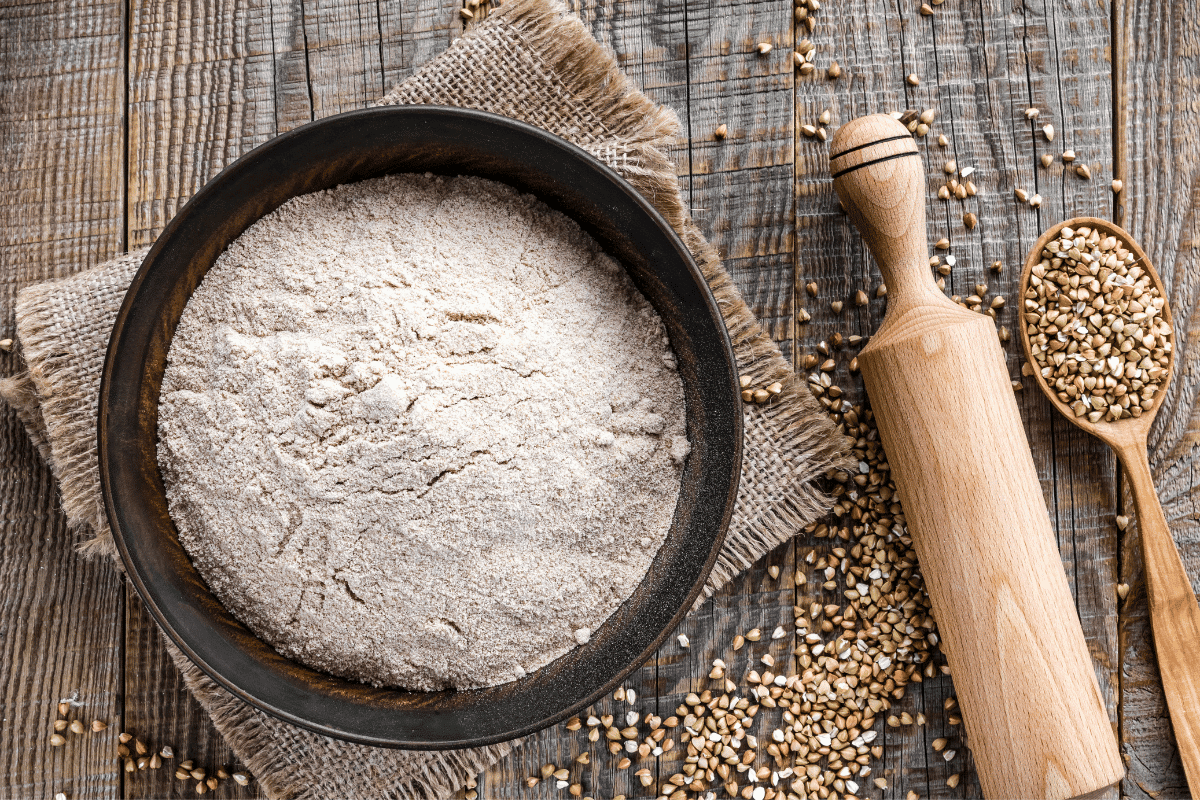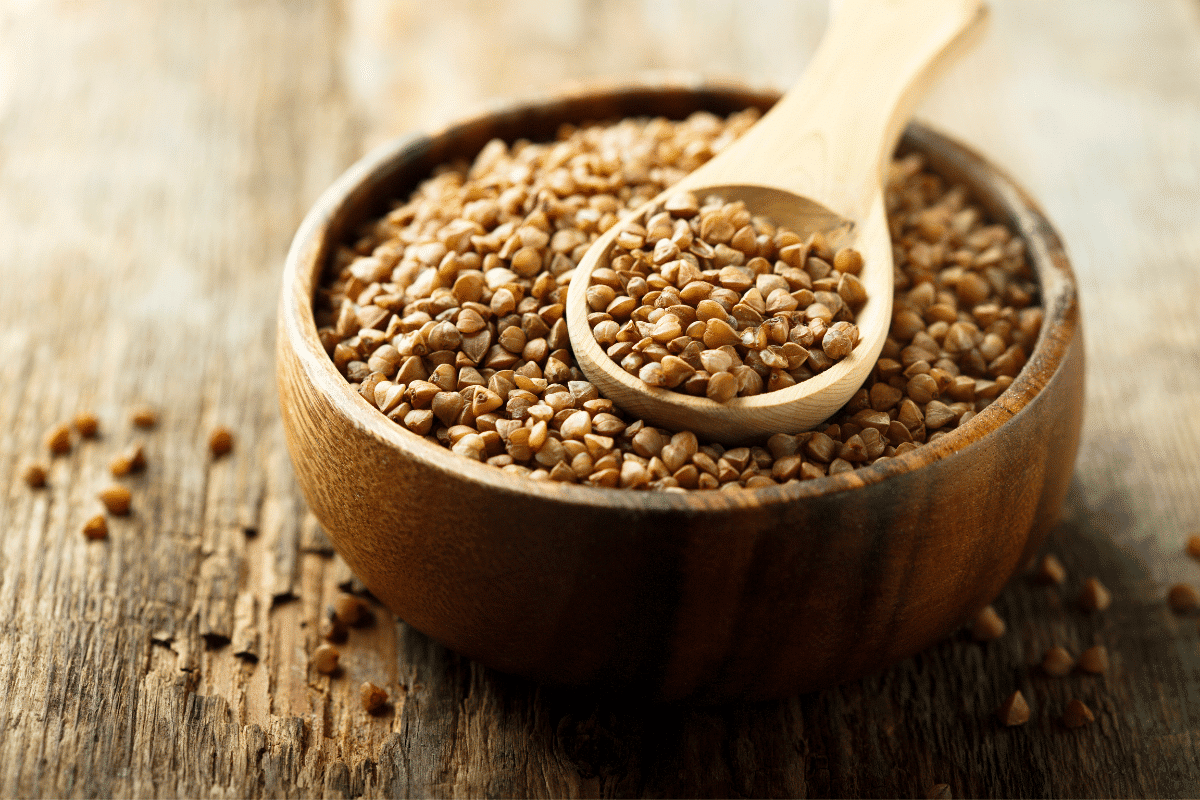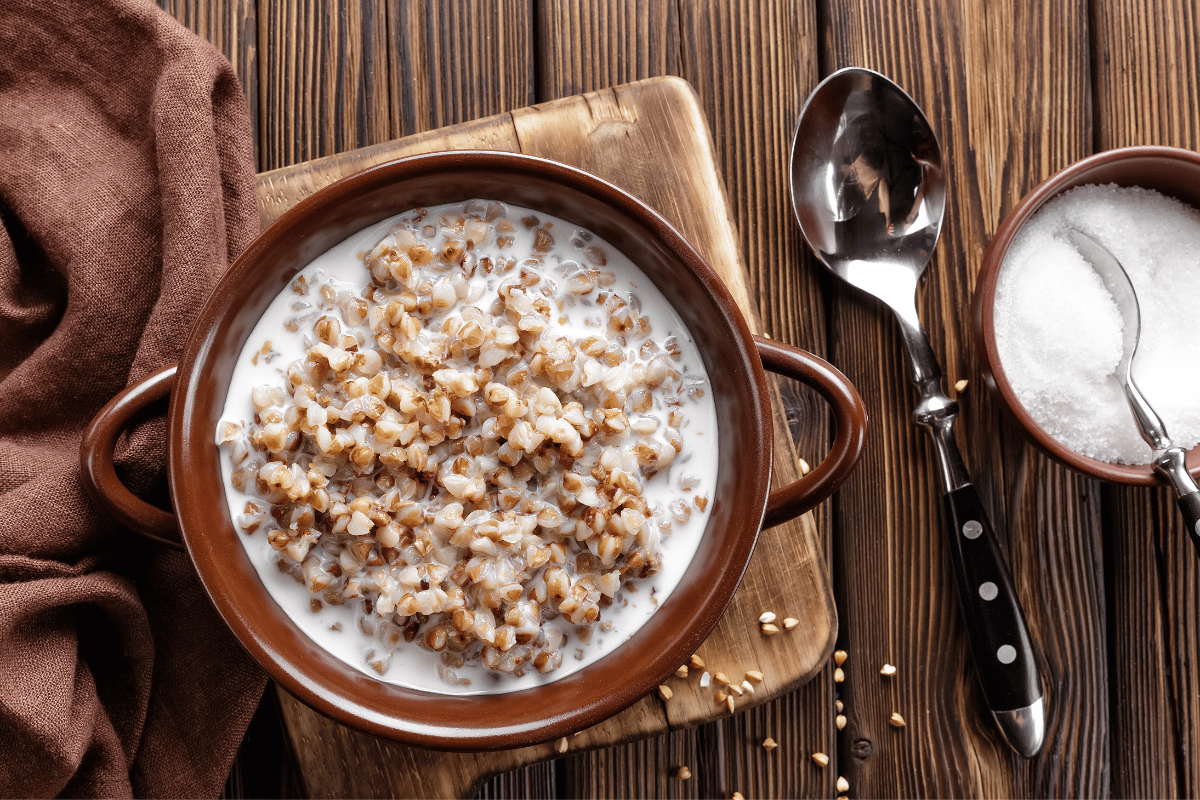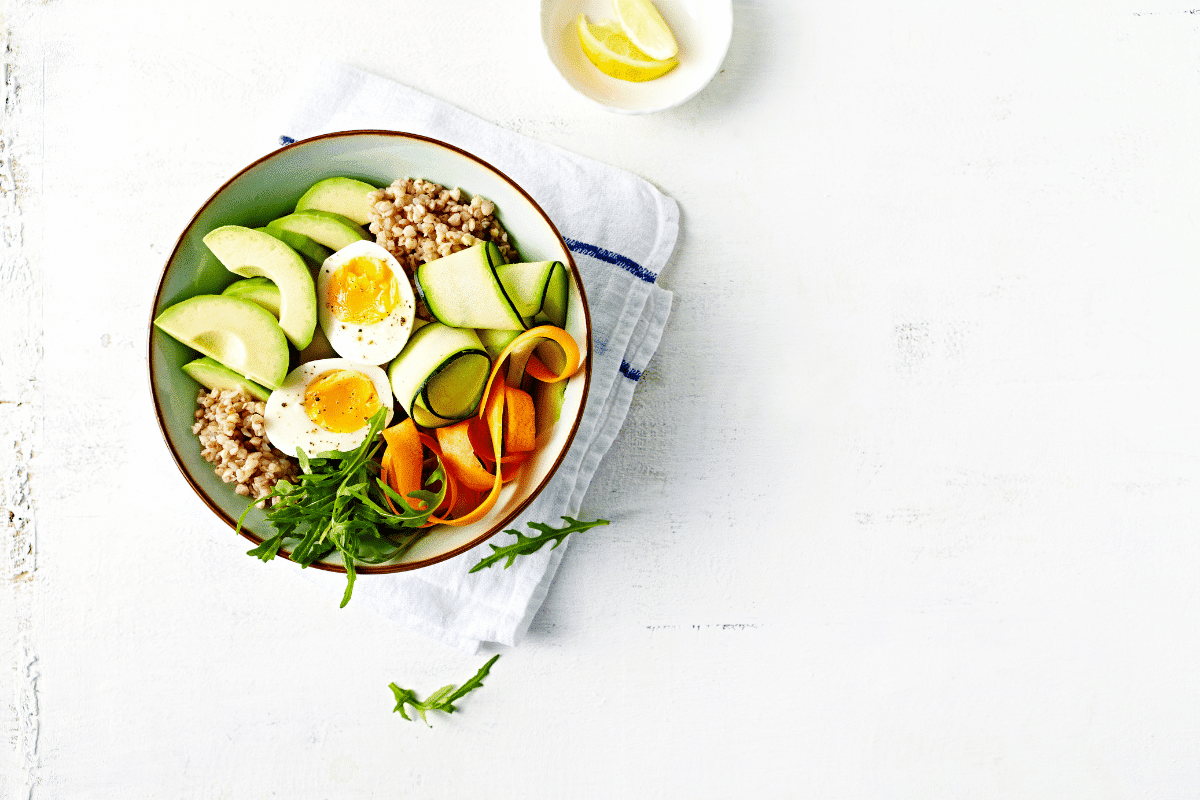Buckwheat is a grain that is often highlighted for its nutritional value and wealth of nutrients and vitamins. This cereal has a long history of use in food around the world, especially in Eastern European countries and Asia.
Here are a few reasons why you should consider including buckwheat in your diet, if you haven't already:
The first key characteristic of buckwheat is its high protein content. Unlike most grains, buckwheat contains significant amounts of protein, making it an excellent choice for vegetarians and vegans looking for a plant-based protein source. Buckwheat proteins are also of high biological value, which means that the body easily absorbs and uses these proteins.
Apart from protein, buckwheat is also rich in fiber. Fiber is essential for healthy digestion and blood sugar regulation. Buckwheat consumption can help maintain stable blood sugar levels, which is especially important for people with diabetes or those who want to manage their body weight.
Buckwheat also offers significant amounts of vitamins and minerals, including vitamin B complex (especially folic acid), magnesium, iron and zinc. These nutrients play a key role in maintaining the health of the nervous system, skin, hair and immune system.
Antioxidants present in buckwheat help protect the body from free radicals and may reduce the risk of various chronic diseases, including heart disease and cancer.
By including buckwheat in your diet, you can contribute to maintaining good health and improving nutrition. There are many ways to enjoy this nutritious grain, including making buckwheat porridge, using buckwheat flour in baking or adding buckwheat as a side dish. Regardless of your choice, buckwheat is a surefire way to get lots of beneficial nutrients into your diet.

Buckwheat for weight loss: A low-calorie superfood
Buckwheat is often highlighted as an excellent choice for weight loss due to its low caloric value and high nutritional density. This cereal has become popular among people who want to lose weight and maintain a healthy diet. Here's how buckwheat can help in the weight loss process.
The first thing to know is that buckwheat contains relatively few calories compared to other grains. There are about 80-90 calories per 100 grams of cooked buckwheat, which is significantly less than the calories in the same amount of white rice or pasta. This low calorie content allows you to feel full and satisfied while consuming fewer calories.
Buckwheat is also rich in fiber, which is essential for maintaining a feeling of satiety and appetite regulation. Fiber slows down the digestion of food, preventing the spike in blood sugar that can lead to hunger pangs after a meal. When you eat buckwheat, you're likely to feel fuller for longer, which can help you avoid snacking between meals.
In addition, buckwheat is a source of quality proteins that also contribute to the feeling of satiety. Protein helps build muscle mass, and muscles burn more calories even at rest, which can further support the weight loss process.
One of the advantages of buckwheat in the process of losing weight is that it is gluten-free, so it is suitable for people with gluten intolerance. Also, buckwheat is naturally low in fat and contains very little saturated fat, which is an added plus for those watching their fat intake.
By adding buckwheat to your diet, you can achieve a sense of satisfaction and meet nutritional needs without the extra calories that can contribute to unnecessary weight gain.
Buckwheat as a gluten-free alternative: Helping people with celiac disease
Buckwheat is an excellent option for people with celiac disease or those dealing with gluten intolerance, as it is a naturally gluten-free grain. Celiac disease is an autoimmune disease that requires a strict gluten-free diet to avoid serious reactions to this protein found in many grains, such as wheat, barley and rye. Buckwheat is an exception and an ideal alternative.
Buckwheat is naturally gluten-free because it does not contain gluten, so people with celiac disease can safely include it in their diet. This grain provides many nutrients and benefits, including protein, fiber, minerals and vitamins, making it a valuable choice to improve the diet of people with celiac disease.
Additionally, buckwheat is rich in antioxidants, which can help reduce inflammation and support overall health. It's also important to note that buckwheat has a low glycemic index, meaning it doesn't cause a spike in blood sugar, which is useful for stabilizing energy and preventing mood swings that some people may experience after eating a high-glycemic meal.
With a variety of preparation methods, including buckwheat porridge, buckwheat pasta, or using buckwheat as a substitute for rice, people with celiac disease can enjoy a varied and delicious diet without worrying about gluten.

Increasing vitality and endurance with the help of buckwheat
Buckwheat can play a significant role in increasing vitality and endurance due to its nutritional properties. This cereal is naturally rich in proteins, vitamins and minerals that support energy metabolism and the general well-being of the body.
First, the high protein content in buckwheat contributes to the maintenance and building of muscle mass. Muscles are energetically active and burn more calories even at rest. As you build muscle through protein intake, you can increase your basal metabolic rate, which means you'll burn more calories throughout the day.
Buckwheat also contains essential minerals such as magnesium and iron, which are crucial for energy production in cells. Magnesium helps convert food into energy, while iron helps transport oxygen throughout the body, which is key to maintaining energy and stamina.
In addition, buckwheat is a good source of fiber, which can help keep blood sugar levels stable and prevent sudden energy swings. Without the sudden drop in blood sugar, you'll feel less tired and fatigued throughout the day.
To increase your vitality and stamina, consider including buckwheat in your diet. You can use it as a base for a variety of dishes, including salads, porridges, or add it to soups and stews to support your energy needs. Buckwheat is a nutritious and tasty option that will help you feel more energetic and ready for the challenges of everyday life.

Buckwheat in cooking: Delicious recipes and creative ideas for preparation
Buckwheat is an unusually versatile ingredient in the kitchen, which can be used in a variety of dishes that go beyond standard porridges and pancakes. Here are some interesting and unusual recipes in which buckwheat is the main ingredient:
Buckwheat noodles with mushroom sauce
Cook the buckwheat noodles, then serve them with a rich mushroom, parsley and cream cheese sauce. This dish is great for vegetarians and mushroom lovers.
Buckwheat croquettes
Mix cooked buckwheat with spices, finely chopped vegetables (such as zucchini, carrots and onions), add eggs for binding and form croquettes. Bake them in the oven or on a pan until they become crispy. Serve them with a sauce based on yogurt and herbs, as a healthy and tasty snack or side dish.
Buckwheat and roasted pumpkin salad
Combine cooked buckwheat with roasted pumpkin, fresh arugula, feta cheese and balsamic vinegar dressing. This salad is perfect for fall and winter days, as it offers a wealth of flavors and textures.
Buckwheat muffins with blueberries
Prepare the dough from buckwheat flour, add blueberries, honey or maple syrup for natural sweetness, and bake in the form of muffins. These muffins are perfect for a healthy breakfast or snack.
Buckwheat with vegetables and tofu
Make a dish with cooked buckwheat, fresh vegetables like broccoli and peppers, and tofu. Season with soy sauce, ginger and garlic for extra flavor. This dish is great for all those who are on a vegan diet.
And now here are two standard recipes for preparing dishes with buckwheat:

Interesting recipes with buckwheat
Buckwheat porridge with fruit
Ingredients:
- 1 cup buckwheat
- 2 cups of water
- 1/2 cup fresh fruit (eg strawberries, blueberries, or bananas)
- Honey for sweetening to taste
Instructions:
Wash the buckwheat and cook it in water until it absorbs all the liquid.
Serve it with chopped fresh fruit and honey for extra flavor.
Buckwheat salad with vegetables and feta cheese
Ingredients:
- 1 cup of cooked fried buckwheat
- 1/2 cup chopped tomatoes
- 1/2 cup chopped cucumber
- 1/4 cup feta cheese
- 2 tablespoons olive oil
- Salt and pepper to taste
Instructions:
Mix all the ingredients together and season with olive oil, salt and pepper.
The effect of buckwheat on blood sugar control
Buckwheat is an extremely useful food in controlling blood sugar, especially for people suffering from diabetes. It is rich in dietary fiber, which plays a key role in slowing down the absorption of sugar into the bloodstream, thus achieving a more stable blood glucose level. This feature makes buckwheat ideal for diabetics, as it helps avoid sudden spikes and drops in blood sugar, which is a common problem with refined carbohydrates.
Buckwheat contains a unique molecule called d-chiro-inositol, which has shown promising results in improving the sensitivity of the body's cells to insulin. Better insulin sensitivity means the body can use blood glucose more efficiently, reducing the burden on the pancreas and improving overall diabetes control.
In addition, buckwheat has a low glycemic index, which means that it does not cause large and rapid spikes in blood sugar after consumption. This is vital for people with type 2 diabetes, as it helps control glycemia and reduces the need for insulin. Regular consumption of buckwheat as a substitute for high-glycemic carbohydrates can reduce the risk of developing metabolic diseases and improve overall glycemic control.
In addition, buckwheat is rich in magnesium, a mineral that plays a key role in glucose metabolism and energy production. Lack of magnesium is associated with a higher risk of developing type 2 diabetes, therefore, including buckwheat in the diet is useful not only for those who already suffer from diabetes, but also for the prevention of this disease.
The effect of hay on the health of the skin
Buckwheat has significant benefits for the skin, thanks to its antioxidant properties and richness of nutrients. One of the key ingredients in buckwheat is rutin, a powerful flavonoid that helps strengthen capillaries and reduce their permeability and fragility. It can be especially useful for reducing dark circles under the eyes, as rutin improves circulation and reduces the visibility of capillaries under the skin.
Buckwheat is also rich in minerals such as zinc and copper, which are key to maintaining skin health. Zinc helps regenerate skin cells and has anti-inflammatory properties, which can be useful in treating conditions like acne. Copper plays a role in the production of collagen and elastin, which are crucial for maintaining the firmness and elasticity of the skin.
Buckwheat consumption can contribute to the hydration of the skin and reduce the symptoms of dryness and itching. It is rich in essential fatty acids, which are vital for maintaining a healthy skin barrier and preventing moisture loss. Regular consumption of buckwheat can also protect the skin from harmful external influences, such as UV radiation and pollution, thanks to its antioxidant properties.
Buckwheat also contains B complex vitamins, which are important for maintaining skin health. Vitamin B6, for example, helps regulate hormones, which can reduce the appearance of acne and other skin problems associated with hormonal imbalances. Vitamin B2 (riboflavin) helps maintain collagen, and a lack of riboflavin can lead to dry and cracked skin.
Conclusion
All these characteristics of buckwheat make it excellent not only for internal health, but also for improving the appearance and health of the skin. By including buckwheat in your diet, you not only improve your general health, but also contribute to healthy, shiny and elastic skin.
Buckwheat, with its rich nutritional profile and wide range of health benefits, truly deserves the status of a superfood. Its high dietary fiber content and low glycemic index make it ideal for regulating blood sugar, which is especially useful for people with diabetes. In addition, the wealth of essential minerals, vitamins and antioxidants contributes to general health, strengthening the heart, improving digestion, as well as maintaining healthy skin. The culinary versatility of buckwheat allows it to be easily integrated into a variety of meals, from traditional dishes to modern culinary creations. Its unique taste and texture enrich the gastronomic palette, providing not only health benefits, but also pleasure in every bite.
All these characteristics of buckwheat clearly indicate why it is considered a superfood. Its ability to support various aspects of health, while being adaptable in the kitchen, makes it an indispensable part of a balanced and healthy diet. With its unique properties, buckwheat not only provides nutritional support to the body, but also enriches the daily diet, making it tasty, healthy and varied.









